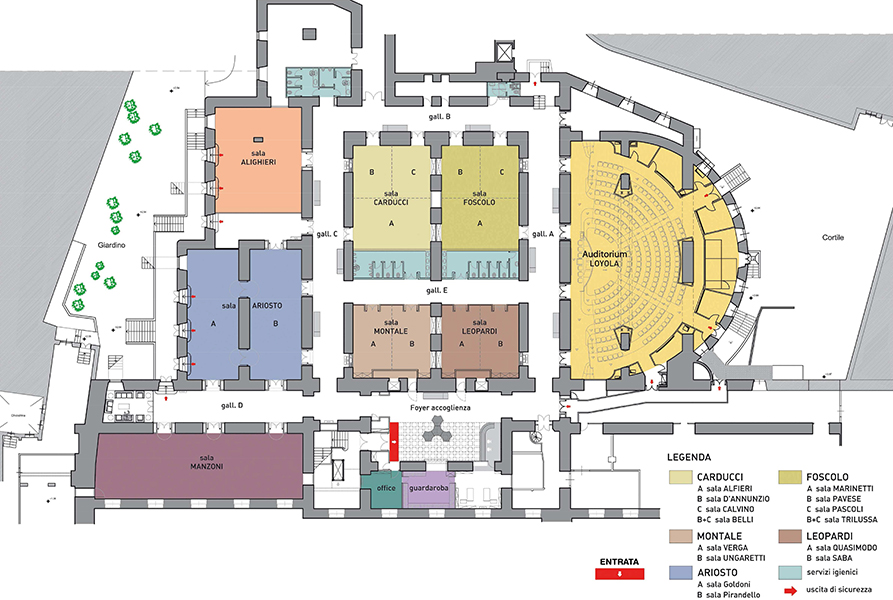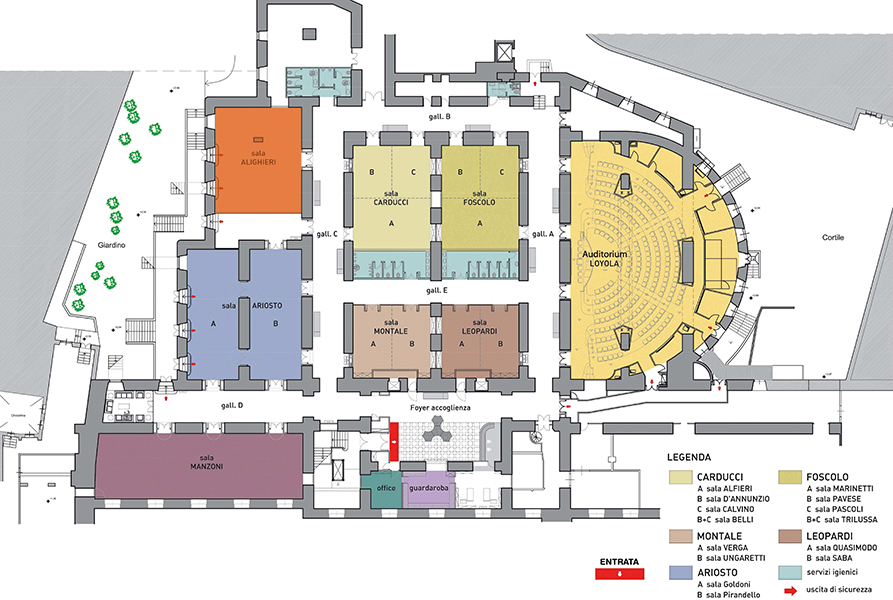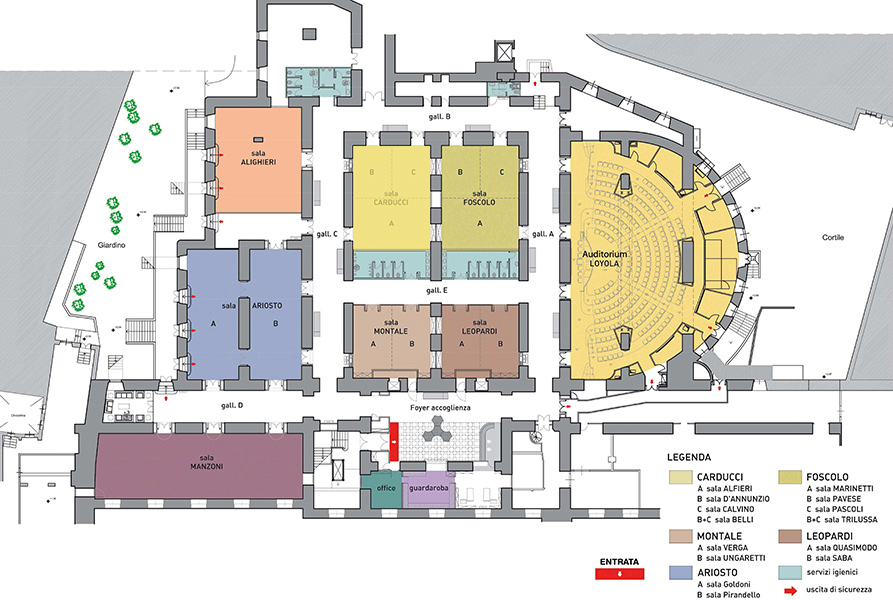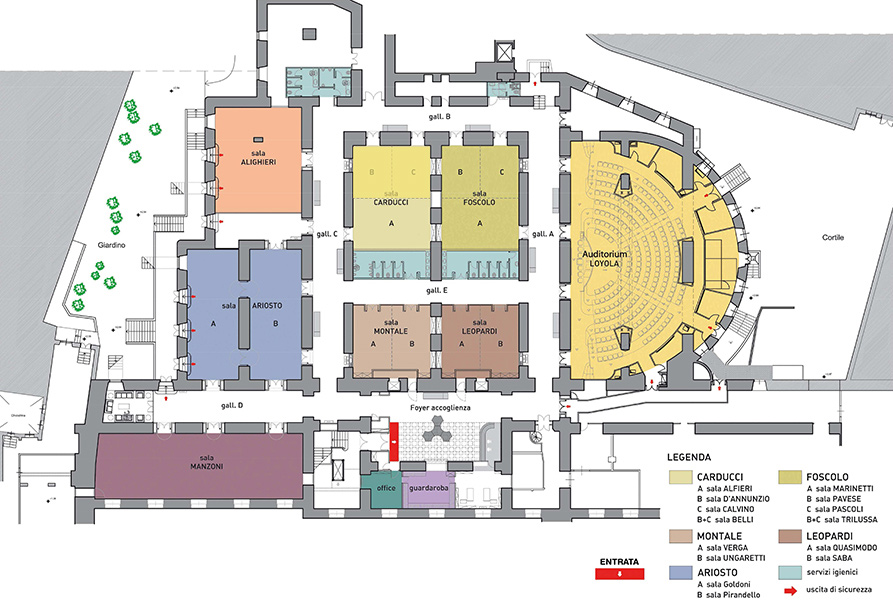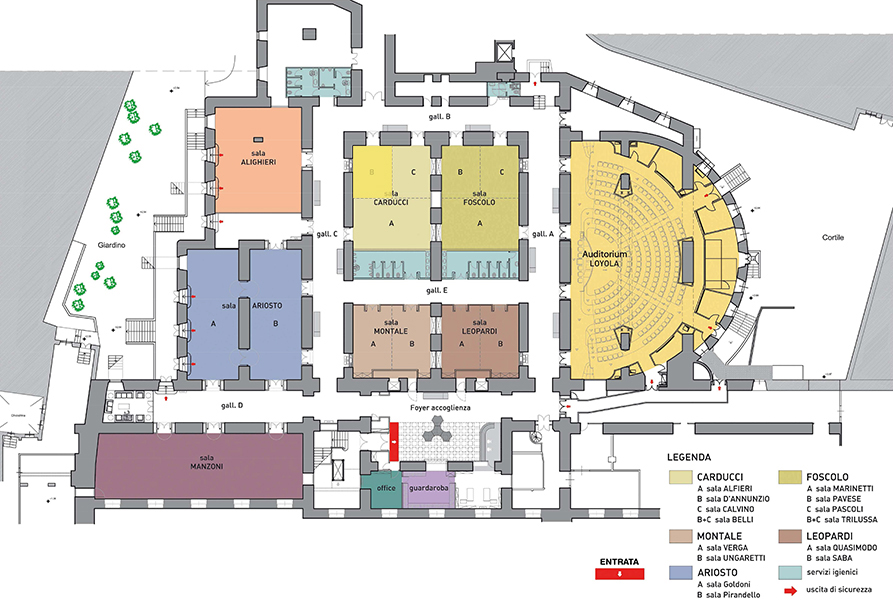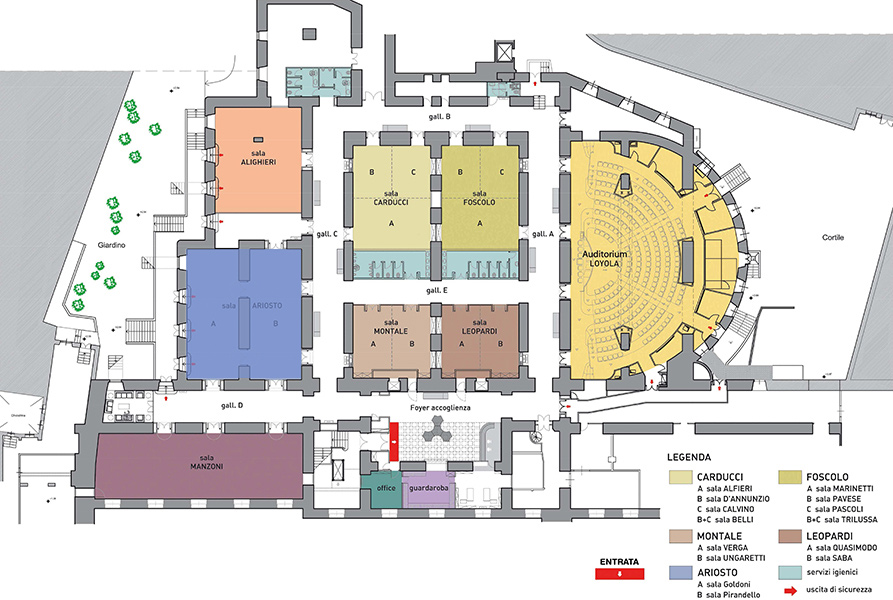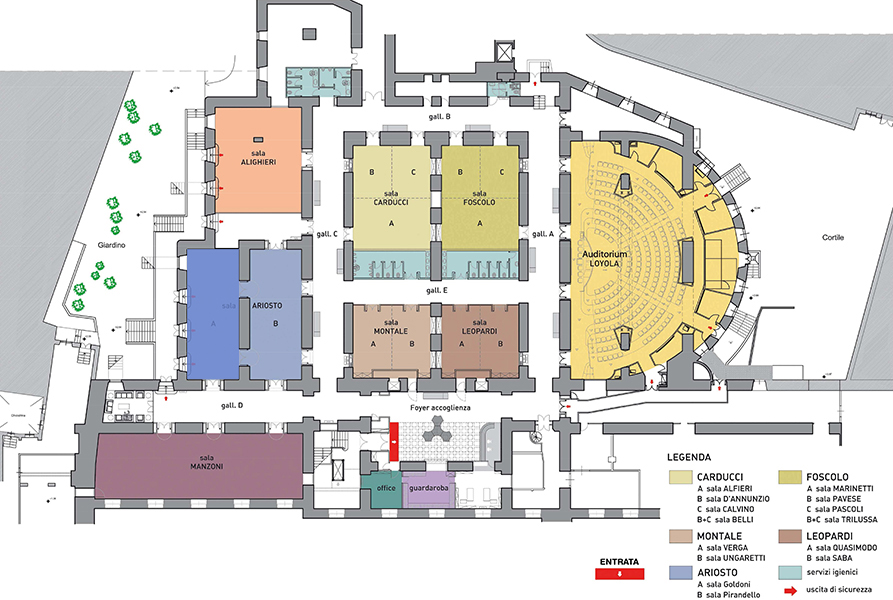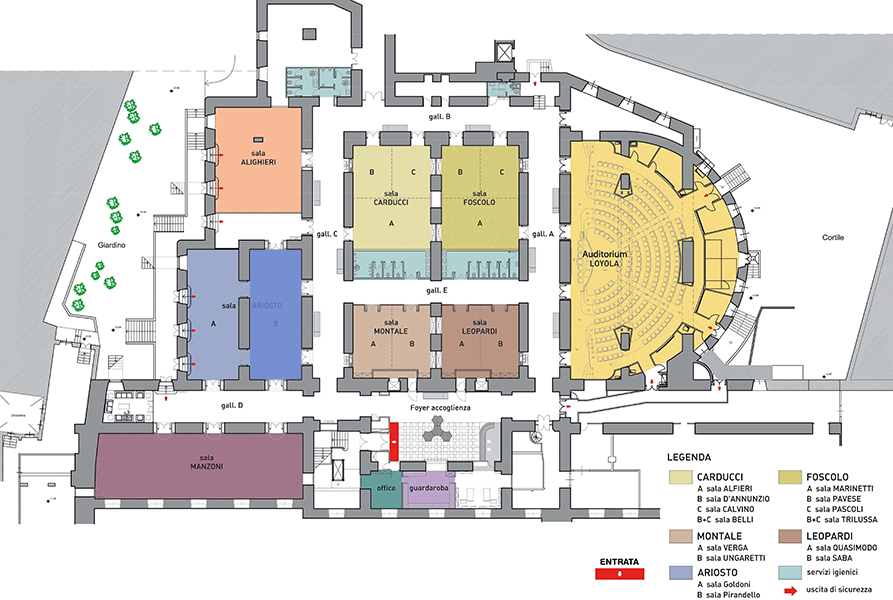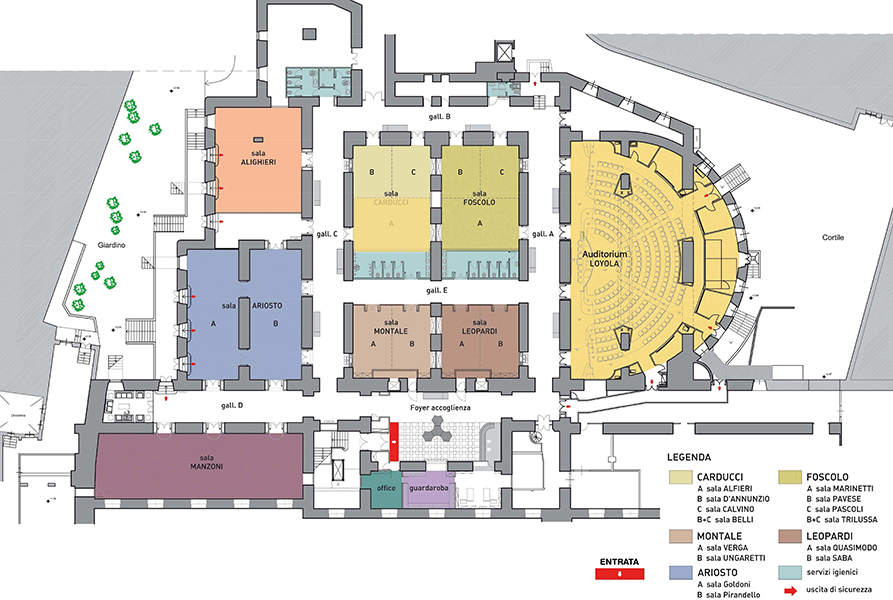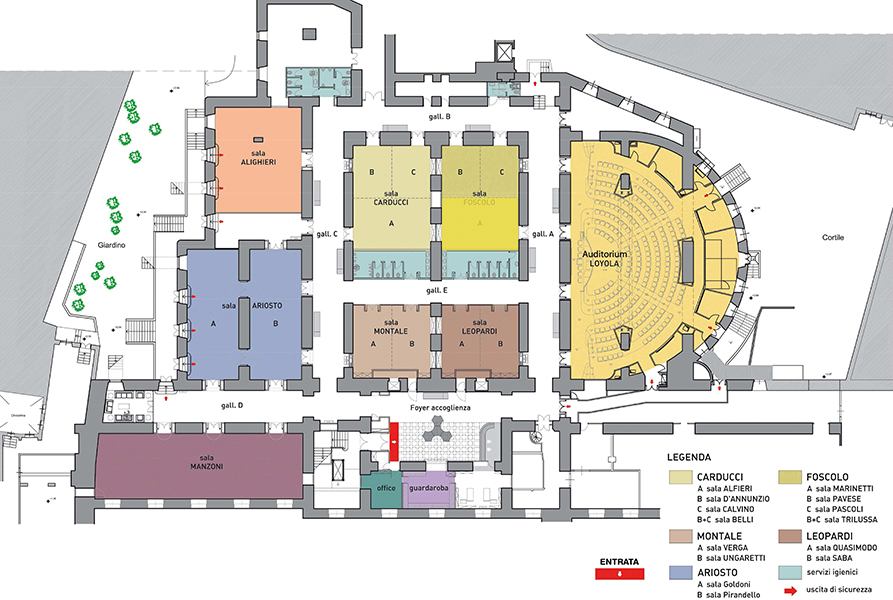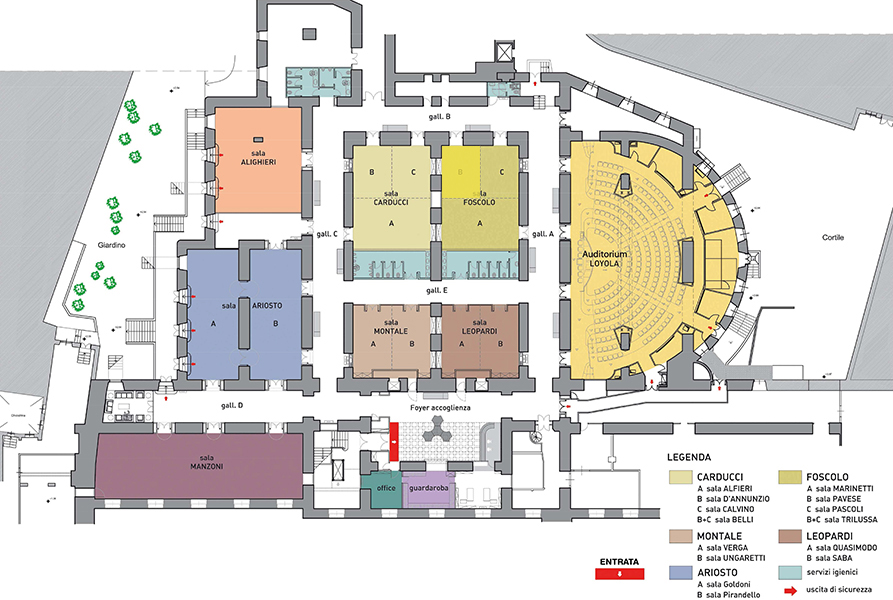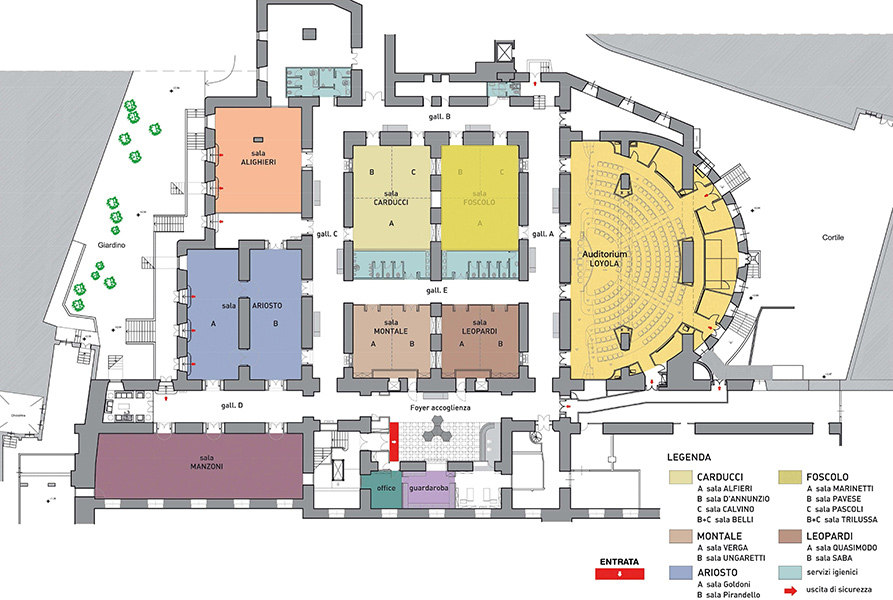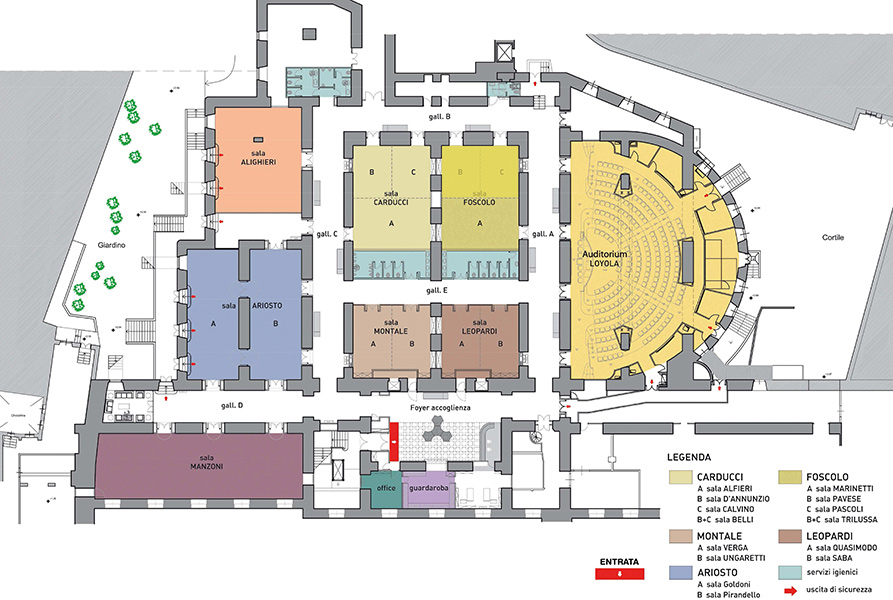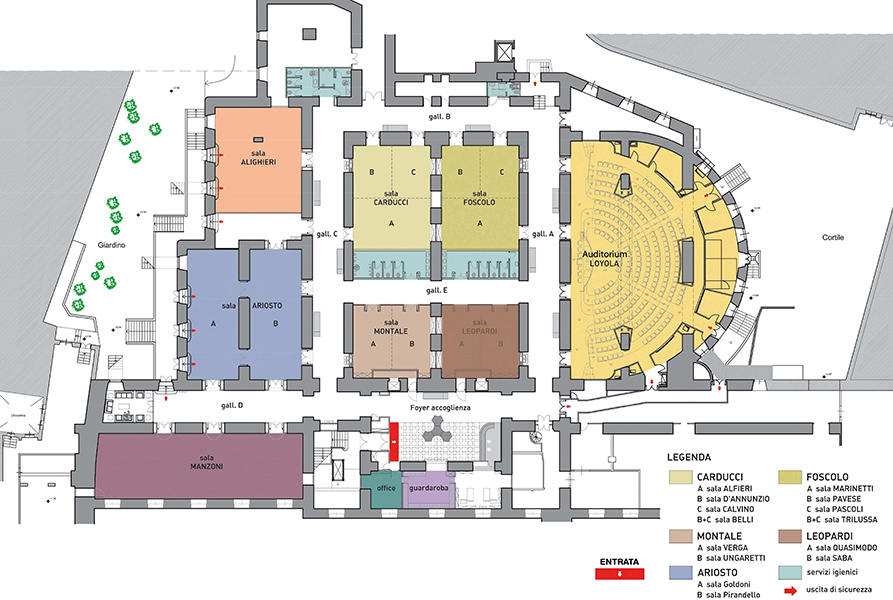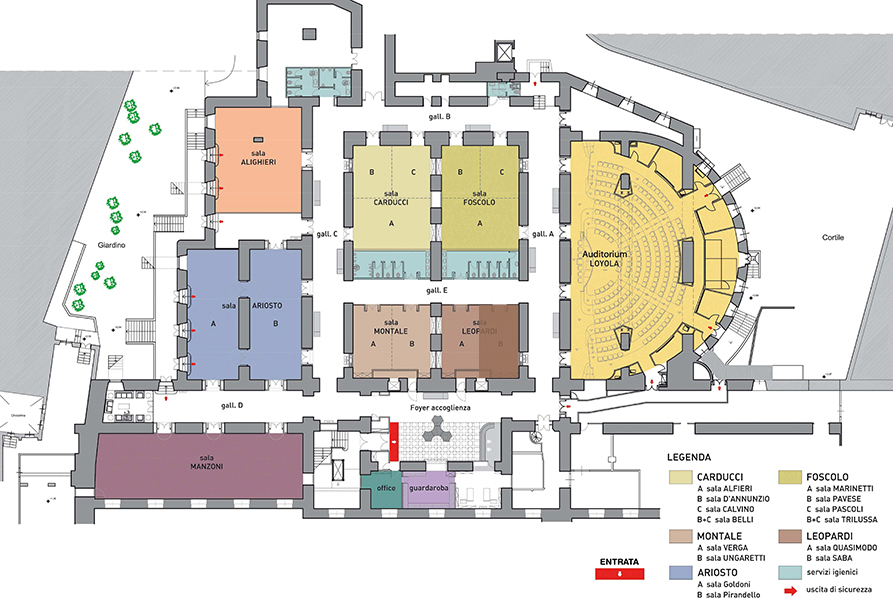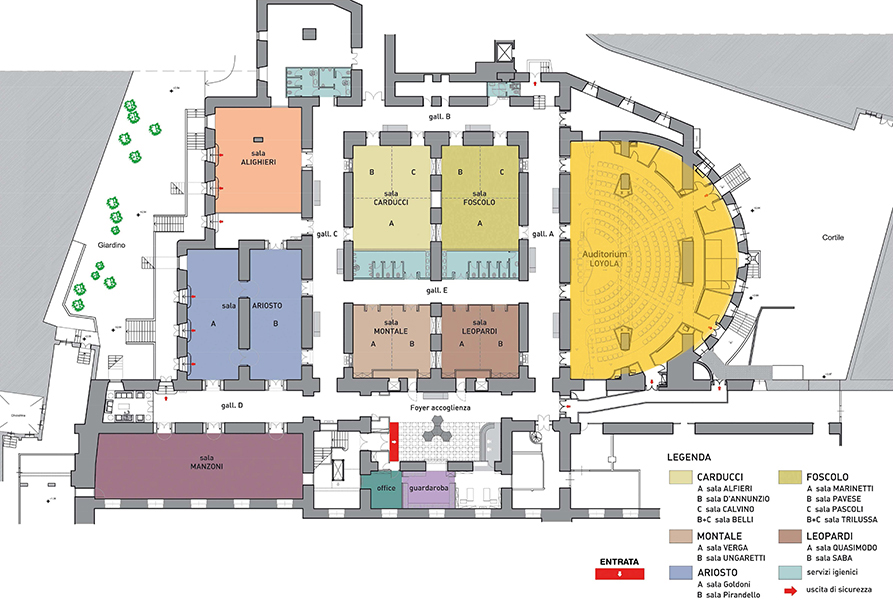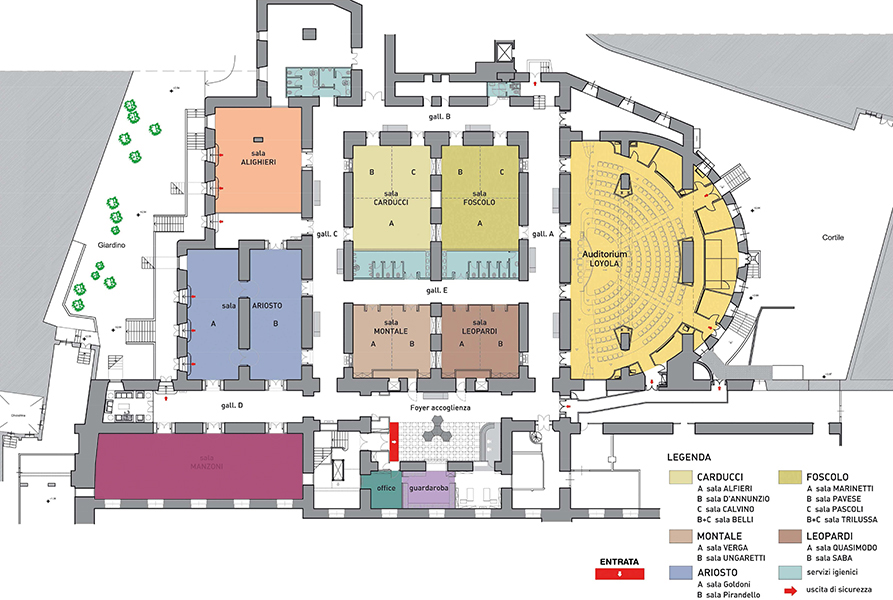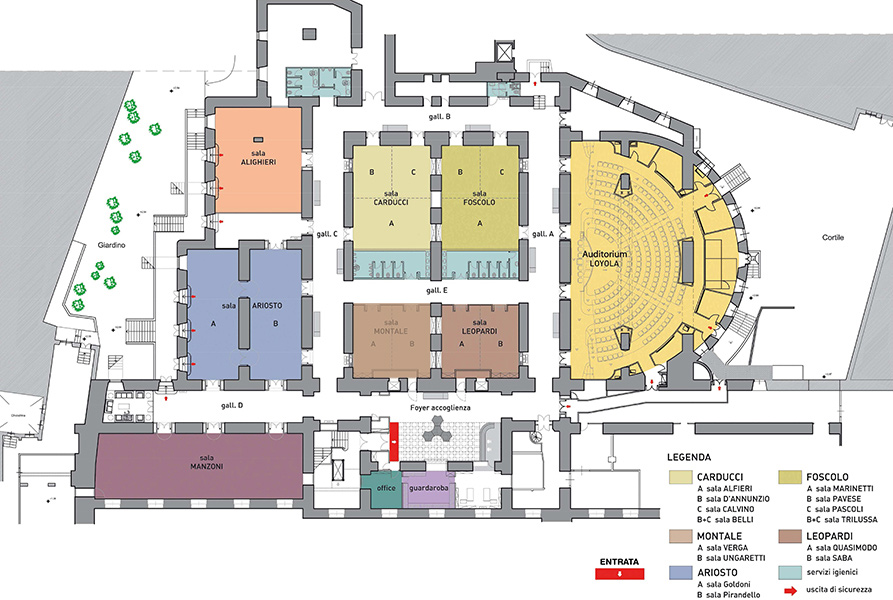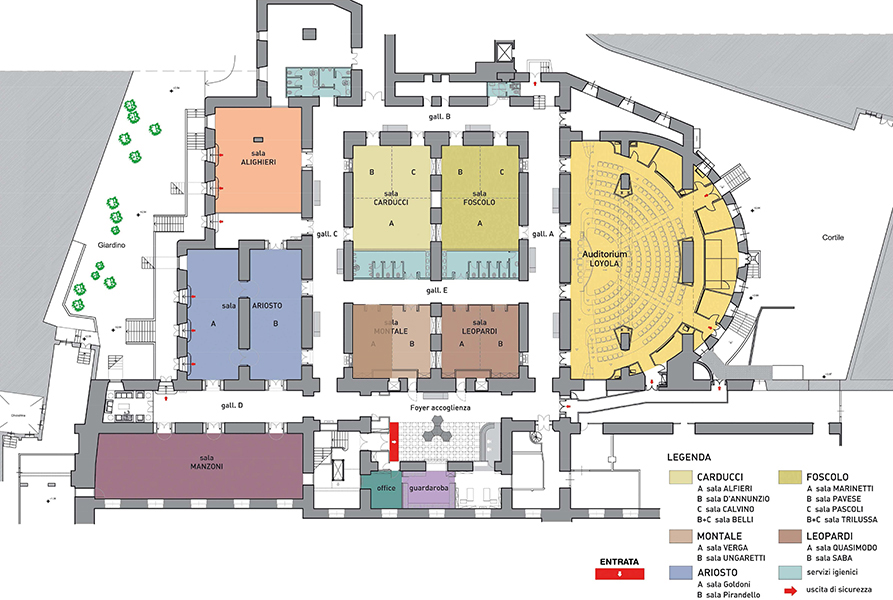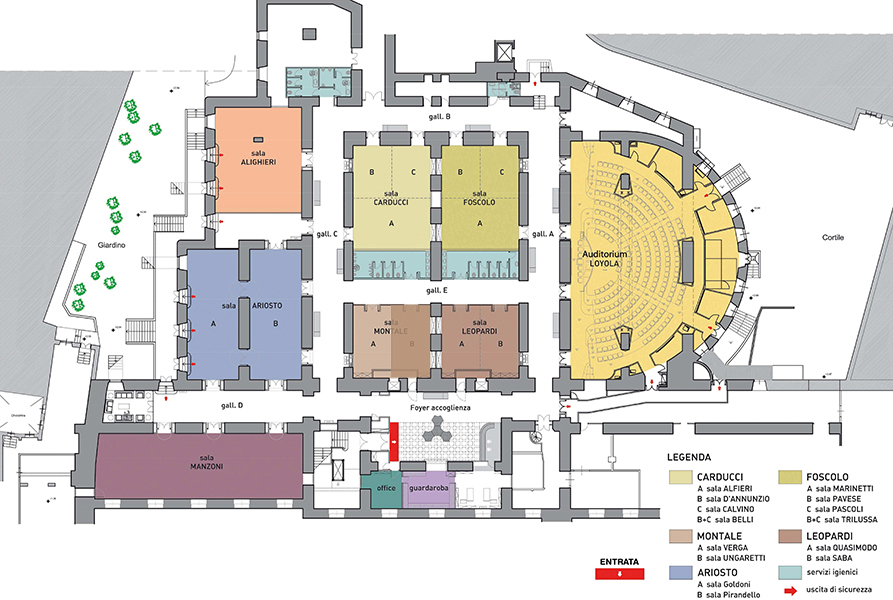Conference centre - History
The location in Via Alibert, a side street of Via Margutta, can only be defined as fantastic. In the heart of Roman history, fashion and art, it is situated a short distance from Piazza di Spagna, Via Condotti, Via del Babuino and their exclusive designer labels. In addition, Via Margutta has been the street of the artists and Roman art galleries since 1600, when it was inhabited by famous painters such as Salvator Rosa, the Zuccari brothers, Guido Reni, the Carracci brothers and a large community of artists, mostly foreigners, as well as noble Roman families and illustrious guests, for whom buildings and hotels were built.
Inside the Conference Centre, there is a real theatre. In this way, an ancient tradition is renewed: in fact, from the beginning of the eighteenth century until 1863, Via Alibert was the home of a great and famous Roman theatre: the Teatro Alibert. The restoration work carried out on the occasion of the opening of the Conference Centre, chose to maintain a nineteenth-century style externally, while a very contemporary design was chosen for the interiors, which have been decorated with specially commissioned paintings by well-known artists.
Some ancient relics were discovered during the restoration work, which were recovered and made visible. For example, the Sala Michelangelo has a ceiling with cross vaults all made of small pink bricks typical of the period. In the Sala Raffaello, a section of an underground aqueduct dating back to the Roman era can be seen, through which the Acqua Vergine from the pool beneath the Pincian Hill flows, supplying water to the Barcaccia fountain in Piazza di Spagna and the Trevi Fountain. The arrival point of the water has been transformed into a fountain that flows, creating a lovely effect over a majolica panel.





